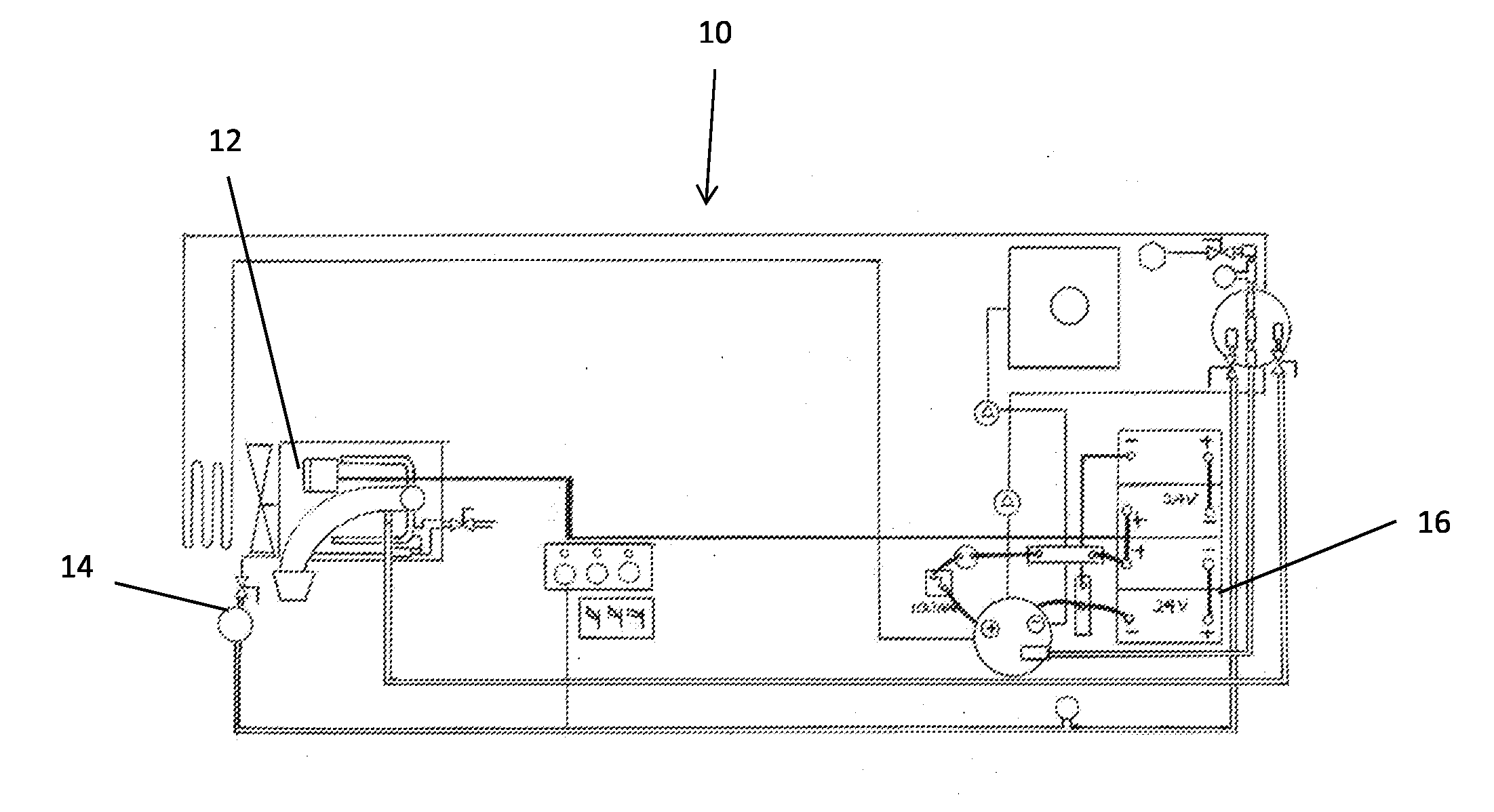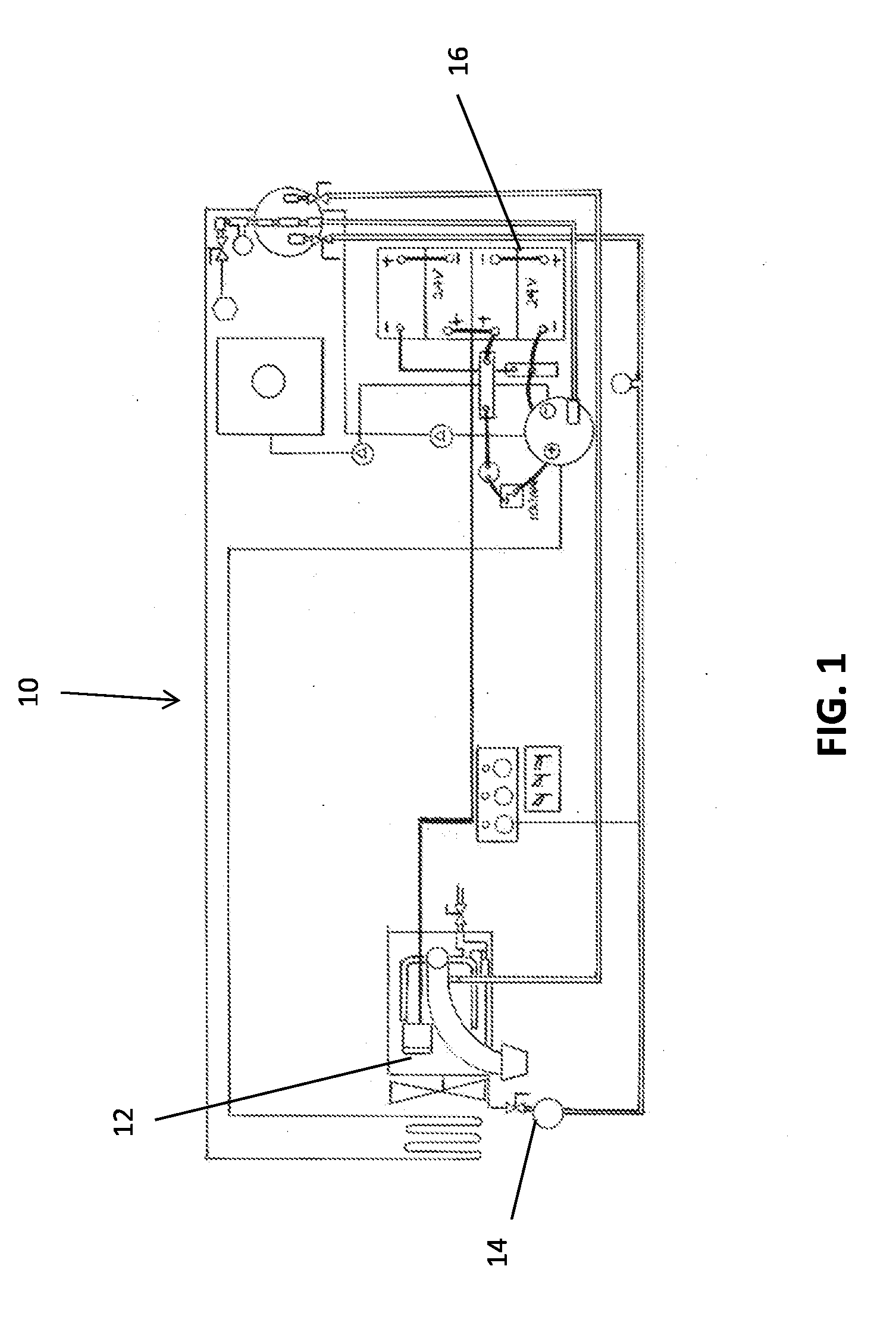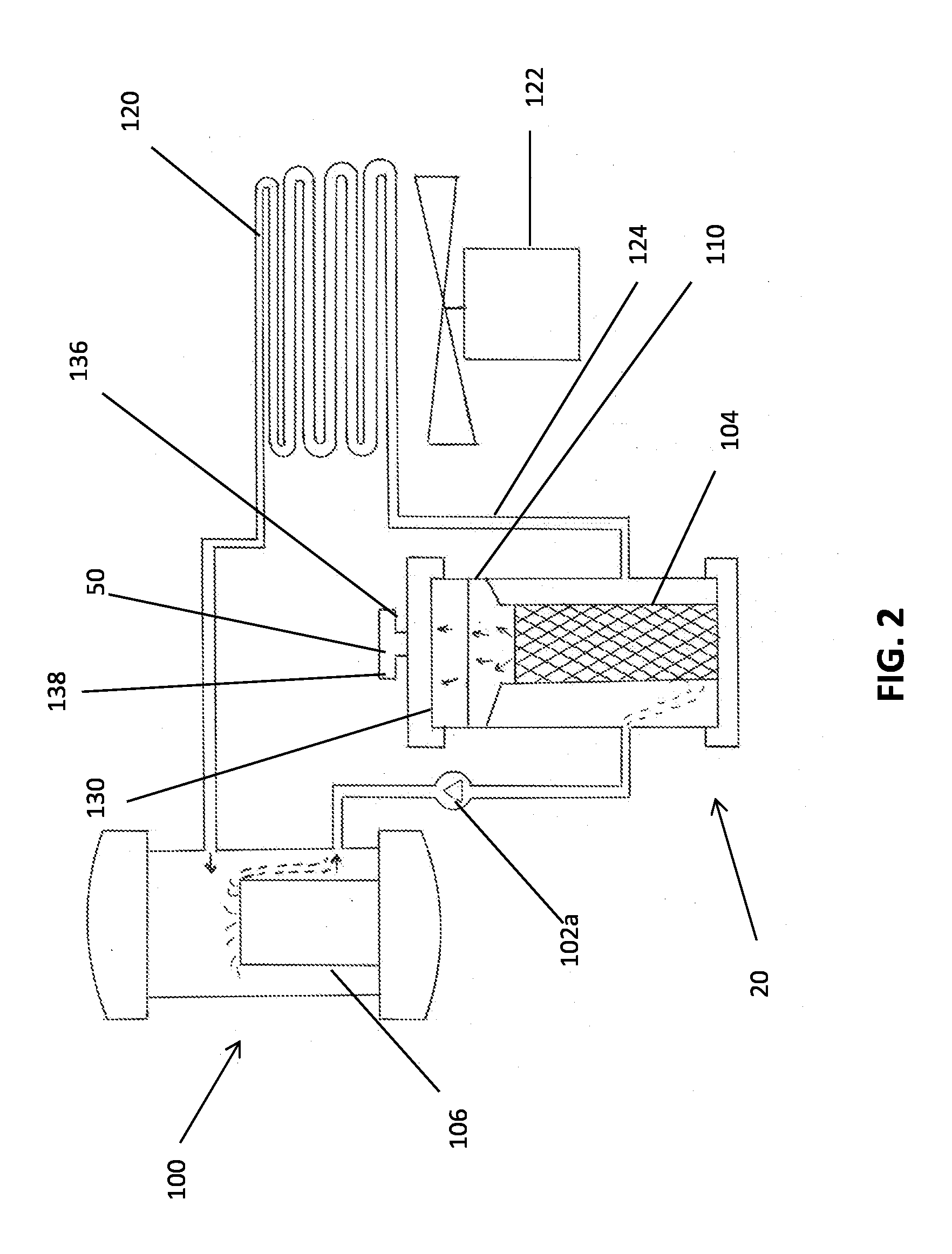Method and system for using the by-product of electrolysis
a technology of electrolysis and by-products, which is applied in the direction of machines/engines, lighting and heating apparatus, instruments, etc., can solve the problems of inability to allow the flow of electrolyte solution or cleaning, the use of water in automobile engines has not yet been successfully integrated into the industry, and the use of water in automobile engines has not yet been successful. , to achieve the effect of improving engine fuel efficiency, reducing engine emissions, and improving combustion efficiency
- Summary
- Abstract
- Description
- Claims
- Application Information
AI Technical Summary
Benefits of technology
Problems solved by technology
Method used
Image
Examples
Embodiment Construction
[0012]At the outset, it should be clearly understood that like reference numerals are intended to identify the same structural elements, portions, or surfaces consistently throughout the several drawing figures, as may be further described or explained by the entire written specification of which this detailed description is an integral part. The drawings are intended to be read together with the specification and are to be construed as a portion of the entire “written description” of this invention as required by 35 U.S.C. §112. As used in the following description, the terms “horizontal”, “vertical”, “left”, “right”, “up”, “down”, as well as adjectival and adverbial derivatives thereof (e.g., “horizontally”, “vertically”, “upwardly”, etc.) simply refer to the orientation of the illustrated structure as the particular drawing figure faces the reader. Similarly, the terms “inwardly” and “outwardly” generally refer to the orientation of a surface relative to its axis of elongation, o...
PUM
| Property | Measurement | Unit |
|---|---|---|
| electrical potential | aaaaa | aaaaa |
| pressures | aaaaa | aaaaa |
| pressure | aaaaa | aaaaa |
Abstract
Description
Claims
Application Information
 Login to View More
Login to View More - R&D
- Intellectual Property
- Life Sciences
- Materials
- Tech Scout
- Unparalleled Data Quality
- Higher Quality Content
- 60% Fewer Hallucinations
Browse by: Latest US Patents, China's latest patents, Technical Efficacy Thesaurus, Application Domain, Technology Topic, Popular Technical Reports.
© 2025 PatSnap. All rights reserved.Legal|Privacy policy|Modern Slavery Act Transparency Statement|Sitemap|About US| Contact US: help@patsnap.com



